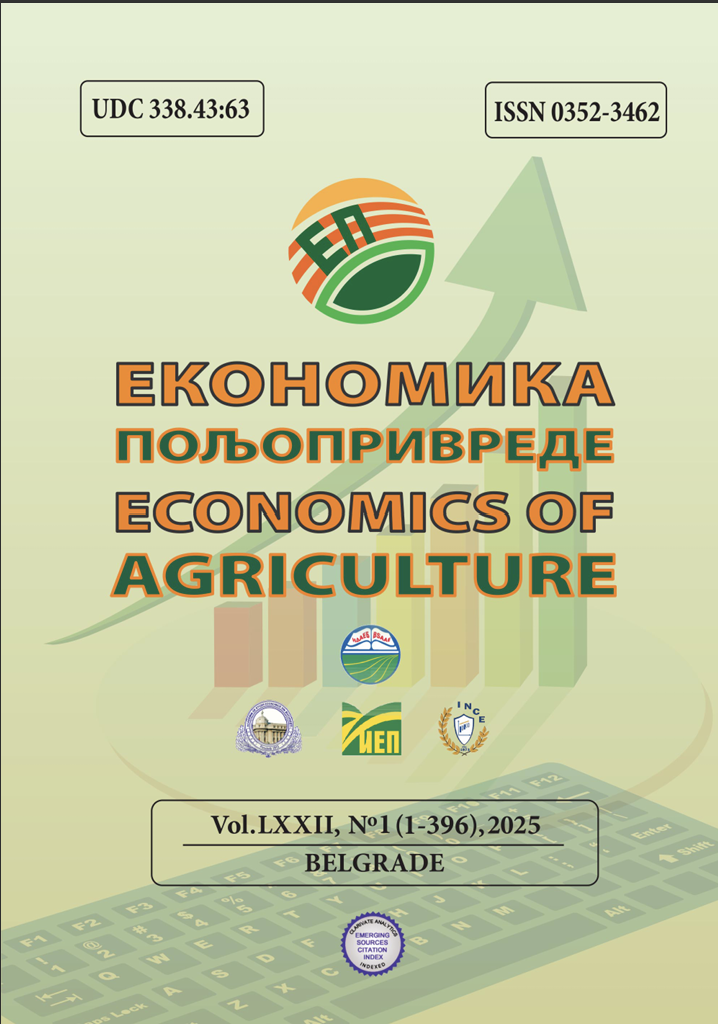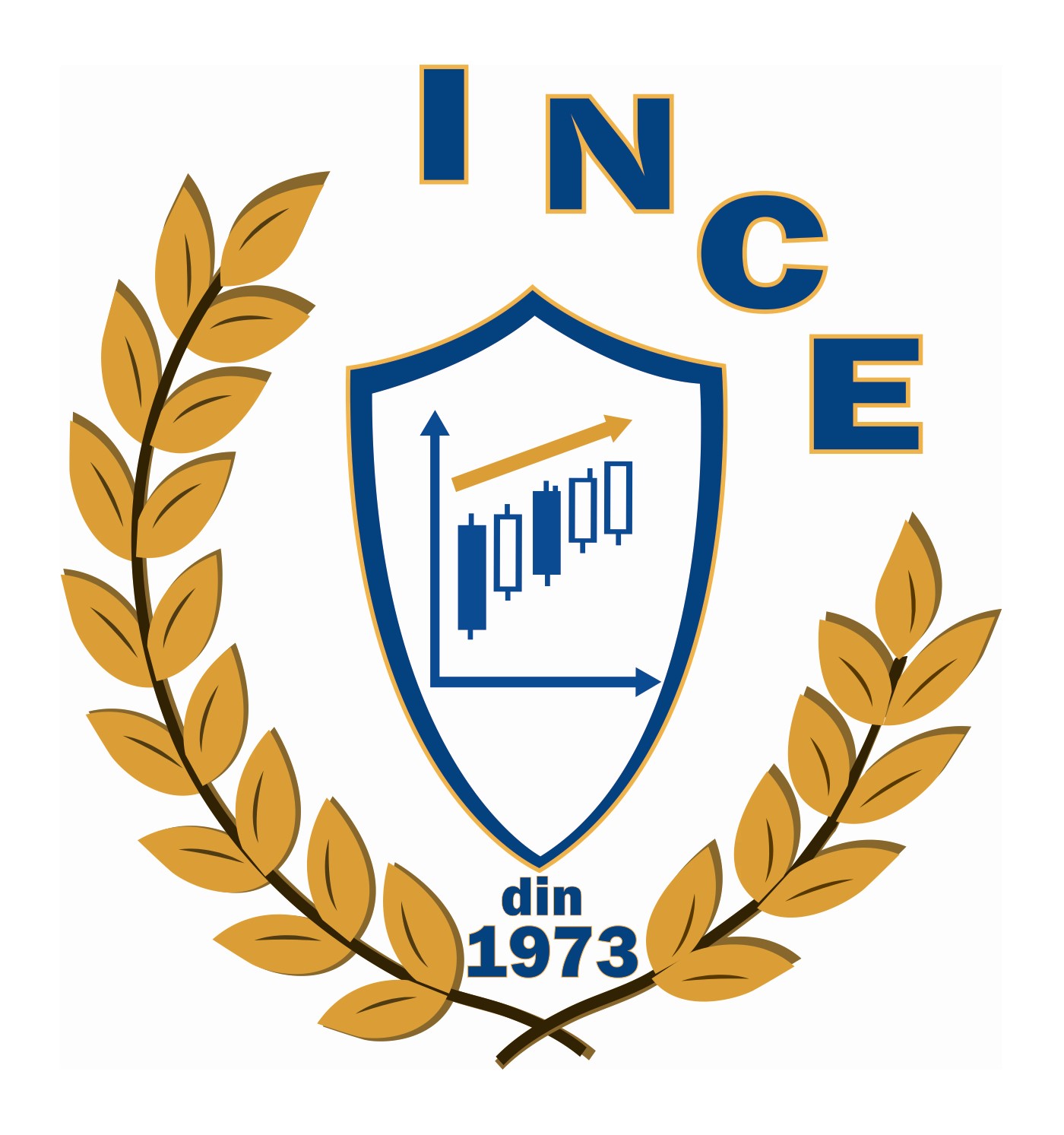ASSESSING THE SATISFACTION LEVEL OF RURAL TOURIST HOUSEHOLDS (RTH) IN SERBIA WITH THE ECONOMIC SUSTAINABILITY DIMENSION
DOI:
https://doi.org/10.59267/ekoPolj250145RKeywords:
rural tourist households, economic sustainability, economic efficiency, agro tourism, socio-economic developmentAbstract
The aim of the research is to examine the economic efficiency of rural tourist households in the Republic of Serbia engaged in rural tourism at their households. To achieve the research goal, two dependent variables were observed: (1) satisfaction with tourist visits and accommodation capacity occupancy, and (2) satisfaction with earnings from rural tourism and the possibility of investment return in this activity. The non parametric Kruskal–Wallis test was employed to examine differences between groups. The research revealed no statistically significant difference in the level of satisfaction with tourist visits and capacity occupancy among respondents with different demographic, socio-economic, and business characteristics. Regarding satisfaction with income from rural tourism and the possibility of investment return in rural tourism among respondent groups, the application of the Kruskal–Wallis test detected differences only based on the Age of the respondents and Dominant sources of income in the rural tourist household.
Downloads
References
Agustin, E. S. A. S., Martini, R., & Setiyono, B. (2022). Evaluating rural tourism competitiveness: Application of PROMETHEE-GAIA method. Cogent Economics & Finance, 10(1), 2054526. https://doi.org/10.1080/23322039.2022.2054526
Anup, K., Parajuli, R.B.T. (2014). Tourism and its impact on livelihood in Manaslu conservation area, Nepal. Environment, development and sustainability, 16, https://doi.org/1053-1063. 10.1007/s10668-013-9512-7
Ashley, C. (2000). The Impacts of Tourism on Rural Livelihoods: Namibia’s Experience; Overseas Development Institute: London, UK. Available at https://ashleyinsight.co.uk/wp-content/uploads/2020/04/namibia-impact-of-tourism-rural-livelihoods.pdf
Cohen, J. (1998). Statistical power analysis for the behavioral sciences. Second Edition. USA: Lawrence Erlbaum Associates. Available at https://www.utstat.toronto.edu/~brunner/oldclass/378f16/readings/CohenPower.pdf
Cui, X.; Chen, J.; Yang, X. (2017). Research on Sustainable Livelihoods Impacted by Rural Tourism A Case Study of Ankang in Qinling and Bashan Mountainous Areas. Mt. Res., 35, 85–94.
Dong, Y. (2022). A study of rural tourism development and tourism economic quality based on regional difference analysis. International journal of sustainable development, 25(3-4), 285-297. https://doi.org/10.1504/IJSD.2022.127969
Djenadić, M. (2012). Marketing u hotelijerstvu, monografija, Draslar partner, Beograd. [in English: Djenadic, M. (2012). Marketing in the hotel industry, monograph, Draslar partner, Belgrade].
He, A.L., Yang, X.J., Chen, J., Wang, Z.Q. (2014). Impact of Rural Tourism Development on Farmer’s Livelihoods—A Case Study of Rural Tourism Destinations in Northern Slop of Qinling Mountains. Econ. Geogr., 34, 174–181. https://doi.org/10.15957/j.cnki.jjdl.2014.12.026
Hua, G., & Yuxiang, Y. (2020). Research review of sustainable livelihood of rural tourism. Tourism Tribune, 35(9), 134-148.
Iorio, M., & Corsale, A. (2010). Rural tourism and livelihood strategies in Romania. Journal of rural studies, 26(2), 152-162. https://doi.org/10.1016/j.jrurstud.2009.10.006
Jiang, G. (2022). How does agro-tourism integration influence the rebound effect of China’s agricultural eco-efficiency? An economic development perspective. Frontiers in Environmental Science, 10, 921103. https://doi.org/10.3389/fenvs.2022.921103
Kastenholz, E., Davis, D., & Paul, G. (1999). Segmenting tourism in rural areas: the case of North and Central Portugal. Journal of Travel research, 37(4), 353-363. https://doi.org/10.1177/004728759903700405
Lapeyre, R. (2010). Community-based tourism as a sustainable solution to maximise impacts locally? The Tsiseb Conservancy case, Namibia. Development Southern Africa, 27(5), 757-772. https://doi.org/10.1080/0376835X.2010.522837
León, Y. M. (2007). The impact of tourism on rural livelihoods in the Dominican Republic's coastal areas. The Journal of development studies, 43(2), 340-359. https://doi.org/10.1080/00220380601125214
Master plan održivog razvoja ruralnog turizma Srbije, 2011. [in English: Master plan for sustainable development of rural tourism in Serbia, 2011]. Available at: https://futurehospitalityleaders.files.wordpress.com/2012/11/master-plan-odrzivog-razvoja-ruralnog-turizma-u-srbiji.pdf
Mathieson, A., & Wall, G. (1982). Tourism, economic, physical and social impacts. Longman.
Melita, A. W., & Mendlinger, S. (2013). The impact of tourism revenue on the local communities’ livelihood: A case study of Ngorongoro Conservation Area, Tanzania. Journal of Service Science and Management, 6(1), 117-126. https://doi.org/10.4236/jssm.2013.61012
Muhi, B. (2013). Marketinški aspekti brending strategije seoskog turizma Vojvodine, časopis Turističko poslovanje, Visoka turistička škola Beograd no. 4, 93-103. [in English: Marketing aspects of the branding strategy of rural tourism of Vojvodina, journal The Business of Tourism, High School of Tourism Beograd no. 4, 93-103].
Nepal, S. K. (1997). Sustainable tourism, protected areas and livelihood needs of local communities in developing countries. The International Journal of Sustainable Development & World Ecology, 4(2), 123-135. https://doi.org/10.1080/13504509709469948
Nyaupane, G. P., & Poudel, S. (2011). Linkages among biodiversity, livelihood, and tourism. Annals of tourism research, 38(4), 1344-1366. https://doi.org/10.1016/j.annals.2011.03.006
Rodríguez Díaz, M., & Espino Rodriguez, T. F. (2016). Determining the sustainability factors and performance of a tourism destination from the stakeholders’ perspective. Sustainability, 8(9), 951. https://doi.org/10.3390/su8090951
Scheyvens, R. (2007). Exploring the tourism-poverty nexus. Current issues in tourism, 10(2-3), 231-254. https://doi.org/10.2167/cit318.0
Shen, F., Hughey, K. F., & Simmons, D. G. (2008). Connecting the sustainable livelihoods approach and tourism: A review of the literature. Journal of Hospitality and Tourism Management, 15(1), 19-31. https://doi.org/10.1375/jhtm.15.1.19
Snyder, K. A., & Sulle, E. B. (2011). Tourism in Maasai communities: a chance to improve livelihoods?. Journal of Sustainable Tourism, 19(8), 935-951. https://doi.org/10.1080/09669582.2011.579617
Su, M. M., Wall, G., & Xu, K. (2016a). Tourism-induced livelihood changes at mount Sanqingshan world heritage site, China. Environmental Management, 57, 1024-1040. https://doi.org/10.1007/s00267-016-0672-8
Su, M. M., Wall, G., & Xu, K. (2016b). Heritage tourism and livelihood sustainability of a resettled rural community: Mount Sanqingshan World Heritage Site, China. Journal of Sustainable Tourism, 24(5), 735-757.
https://doi.org/10.1375/10.1080/09669582.2015.1085868
Su, M. M., Wall, G., Wang, Y., & Jin, M. (2019). Livelihood sustainability in a rural tourism destination-Hetu Town, Anhui Province, China. Tourism Management, 71, 272-281. https://doi.org/10.1016/j.tourman.2018.10.019
Wang, R., Dai, M.L., Ou, Y.H., Ma, X.L. (2021). Measurement of rural households’livelihood assets with cultural capital intervention: A case study of Likeng village in Wuyuan. Tourism Tribune, 36, 56–66.
Wilson, S., Fesenmaier, D. R., Fesenmaier, J., & Van Es, J. C. (2001). Factors for success in rural tourism development. Journal of Travel research, 40(2), 132-138. https://doi.org/10.1177/004728750104000203
Wu, M. Y., & Pearce, P. L. (2014). Host tourism aspirations as a point of departure for the sustainable livelihoods approach. Journal of sustainable Tourism, 22(3), 440-460. https://doi.org/10.1080/09669582.2013.839689
Ya-juan, L.I., Hu, Y.U., Tian, C., Jing, H.U., Hai-yang, C. (2016). Livelihood changes and evolution of upland ethnic communities driven by tourism: A case study in Guizhou Province, southwest China. Journal of Mountain Science 13(7), 1313–1332. https://doi.org/10.1007/s11629-015-3631-6
Downloads
Published
How to Cite
Issue
Section
License
Copyright (c) 2025 Ekonomika poljoprivrede

This work is licensed under a Creative Commons Attribution-ShareAlike 4.0 International License.









